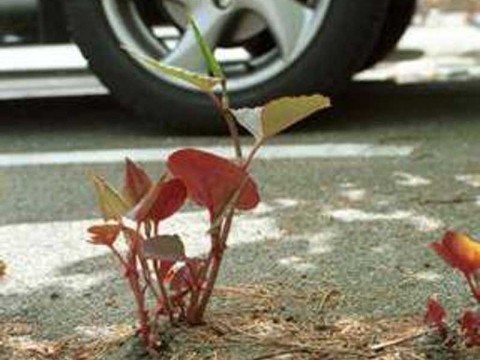Some are planted by unwitting gardeners; others are trucked in with gravel and soil. Some come naturally, blown by winds and carried by streams.
But however they get here, the core message of the newly formed Sea to Sky Invasive Species Council (SSISC) is that non-native plants and animals are not welcome here.
"Our highest priority would be things like the knotweeds, which grow like bamboo and are so hard to get rid of. They come through roads and sidewalks and cost taxpayers so much money," said Kristina Swerhun, part-time coordinator for the SSISC. "Anything can take over. We have Yellow Flag here in Whistler, and people think it's beautiful, but it can take over an area and knock all the native species out. There is Knapweed in Pemberton that displaces crops, which can be quite serious if you let it get a foothold."
There are numerous invasive species on provincial lists, including animals like the bullfrog and insects like gypsy moth - neither spotted in Whistler yet, but volunteers are always on the lookout.
An invasive species is a species that is not native to an area, but can displace native plants and animals or cause other damage to ecosystems. Many invasive species that are plaguing the province got their start as ornamental garden plants, but species can spread other ways as well. Sea to Sky is particularly challenging because there are so many distinct ecosystems, from coastal lowlands to mountains, to the agricultural plains in Pemberton.
Swerhun says the SSISC is not reinventing the wheel. With some seed funding from the Ministry of Agriculture and Lands, the SSISC formalizes the region's work to identify and remove invasive species the same way as councils have formalized the process for other regions surrounding Sea to Sky.
"We're surrounded by communities that have invasive plant councils. There's one on the Island, and one in Vancouver, and another in the Fraser Valley - we're the only hole in this part of the province," said Swerhun.
"There has been a lot of great work at the grass roots level, but at some point we needed regional cooperation. You might be able to stop knotweed from taking root in your backyard, but it doesn't mean anything if the person upwind isn't doing anything.
"We're lucky we're in a position where we can address things that can be controlled. I know on Vancouver Island they are past the point where they can control it anymore, and it's more about minimizing the impacts."
In Squamish, the Squamish River Watershed Society has been taking on invasive species like knotweeds, while Whistler has the municipality, the Whistler Biodiversity Project and the Whistler Fisheries Stewardship Group on the job. The Stewardship Pemberton Society actually took a lead role in the application to the Ministry of Agriculture and Lands to create the SSISC, after a number of invasive species started cropping up.
Right now the SSISC is still working out details of how they will operate and coordinate with other groups, but Swerhun says the focus will be more on mitigation, taking direct action to uproot invasive species, rather than on education - not that education is not important, she says, but because they have a limited budget and both the province and municipal governments are working on their own educational programs.
The SSISC will also file information on invasive species in a provincial database, coordinate efforts with other councils, and bring information home to share with grassroots organizations.
Swerhun expects most of their information to come from members of the public that know how to recognize invasive species. Right now people can submit reports on the Whistler Biodiversity Project's website, www.whistlerbiodiversity.ca, or email Kristina Swerhun at ssinvasives@gmail.com. You can also call 604-935-7665.
For more information on invasive species, visit the Invasive Plant Council of BC (www.invasiveplantcouncilbc.ca), Coastal Invasive Plant Council (www.coastalinvasiveplants.com) and the Greater Vancouver Invasive Plant Council (www.gvipc.ca).
The SSISC is looking for volunteers to help out through the region as directors or advisors, or to document the location of invasive species.




